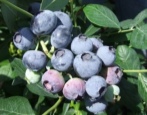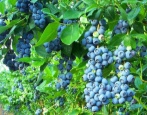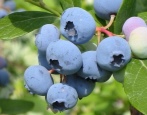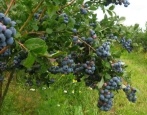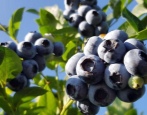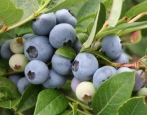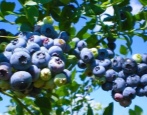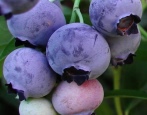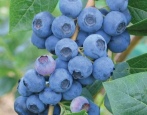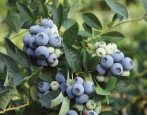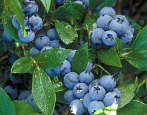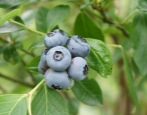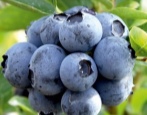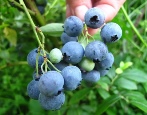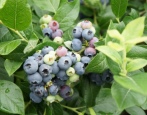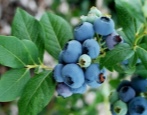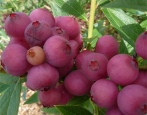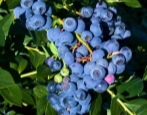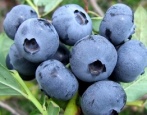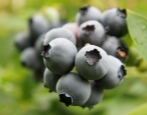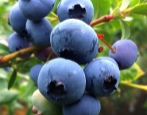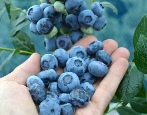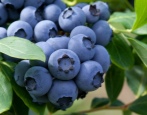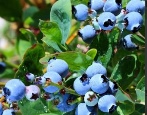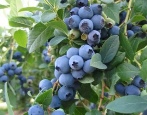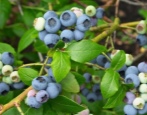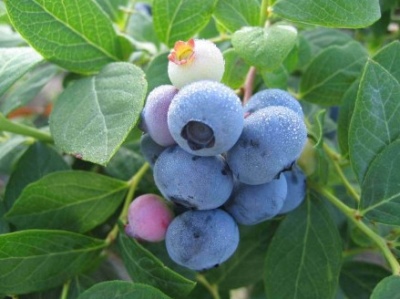
- Authors: James Findley Hancock (Michigan, USA)
- Appeared when crossing: Eliot x Brigitte Blue
- Year of approval: 2017
- Ripening terms: late ripening
- Growth type: tall
- Bush height, m: 1,5
- Taste: sweet, sour
- Yield: high
- Average yield: 153 kg / ha (6 kg per bush)
- Fruit size: medium
The Liberty variety is distinguished by its high yield, dessert taste and resistance to many diseases. This commercially recognized blueberry is one of the leading industrial blueberries. Berries are widely used in cooking.
Breeding history
The variety was bred in 1997 by the breeder James Hunk at the University of Michigan (USA) as a result of pollination of the Eliot and Brigitte Blue varieties. Included in the State Register in 2017
Description of the variety
The bush is tall, up to 150 cm, medium spreading with a diameter of 120 cm, shoots of medium length, straight, green and shiny. The leaf is oval, small, green, smooth, hard. Flowers are white, bell-shaped, collected in a dense raceme, appear in May. The shrub has a lifespan of about 30 years.
Fruit characteristics
Small berries weigh 1.5-2 g, flattened-rounded, violet-blue with a blue waxy bloom. The pulp is dense and juicy, greenish with a delicate aroma. The skin is firm. They are transported well, kept fresh in the refrigerator for about a week.
Taste qualities
The taste is sweet with sourness, sugar content - 14.2%, acid - 1.1%, ascorbic acid - 18.1%. Tasting score 4.5 points.
Ripening and fruiting
The shrub begins to bear fruit in the 4th year of life, then regularly. The variety is late-ripening in terms of ripening, the berries ripen from the end of August and throughout September. Usually 2-3 fees are required. According to some gardeners, harvesting sometimes continues until the first frost begins. In some regions, two crops are harvested per season. Can be removed mechanically.
Yield
An average of 4-6 kg is removed from one bush.
Growing regions
The variety is recommended for planting throughout Russia. It should be noted that due to the late ripening in colder climates, the harvest may not ripen in unfavorable weather.
Self-fertility and the need for pollinators
The variety is partially self-fertile; to obtain high yields, pollinators are planted nearby with the same flowering period.
Growing and care
The culture is planted in mid-April or in the second half of October. For seedlings, the soil is prepared in advance: colloidal sulfur or potassium sulfate is added. For planting in the fall, seedlings are chosen only with lignified shoots. High-moor peat, sand, rotted coniferous sawdust, bark or spruce needles are added to the garden soil. Peat should make up at least 40% of the total amount of the mixture. The optimum level of soil acidity is pH 4.0, otherwise the foliage will suffer from chlorosis.
The holes are dug 50 cm deep, and up to 100 cm in diameter. A specially prepared mixture is poured into them and poured from a watering can with a diffuser by sprinkling: 4 buckets per 1 sq. meter. One-year seedlings are buried by 2 cm, and two-year ones - by 3-4 cm. An interval of 1 m is left between the seedlings, between rows - 3 m. In a private garden, you can plant more sparsely. After planting, water and mulch with rotted pine needles.
In the first year of planting, they are fed with ammonium sulfate - 40 g for 1 bush, with an increase in the size of the plant, the annual dose is increased to 100-200 g. In addition, potassium salt is added - 40 g, superphosphate - 50 g, magnesium - 20 g.
Nitrogen compounds are applied in the 2nd year after planting: ½ of the total composition - during the budding period, together with phosphorus and potassium. The second half of nitrogen fertilization is applied at the beginning of June. To maintain acidity in the garden bed, once every 2 years, 50 g of sulfur are poured under each shrub, then watered.
In the spring, sanitary pruning is done, removing branches damaged during winter. Mature plants need annual thinning pruning. Anti-aging pruning is performed at the age of 5 years. When grown on an industrial scale, branches older than 2 years are cut to obtain larger berries on a young growth.
Blueberries require regular moisture about 2 times a week, but they cannot stand moisture stagnation at the roots. Pour with acidified lukewarm water, for this use table vinegar - 100 g per bucket of water. One bush takes about 1 bucket of water. It is imperative to mulch the root area with coniferous sawdust or needles. During the rainy season, the frequency of watering is reduced. Weeds must be removed carefully, and it is not recommended to loosen the soil so as not to damage the roots.

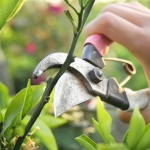
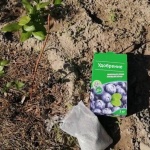
Disease and pest resistance
The shrub is weakly susceptible to diseases and pests, resistant to moniliosis and anthracnose. May be affected by gray spot - preventive spraying in spring and autumn with Bordeaux liquid helps. Bordeaux mixture and the drug Fitosporin proved to be the most effective against gray rot. The remedy "Aktara" helps against red ring spot and mosaic.
Of insects, the culture can be affected by aphids, flower beetles, leaf rollers; the preparation Fitoverm has shown itself well against these pests.
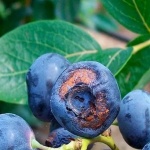
Winter hardiness and the need for shelter
The plant adapts well to temperature extremes in autumn and spring, as well as to winter thaws. This is a frost-resistant species, it can withstand temperatures up to -25 degrees. It is recommended to mulch the soil around the plants for the winter in temperate climates; in colder regions, you can bend the branches to the ground and wrap them with agrofibre. It is better to cover young bushes 3-4 years old completely in any climate. Seedling containers are brought into greenhouses and wrapped up.

Location and soil requirements
The culture requires acidic soil, pH 3.5-5. Blueberries prefer sunny areas without a close location of groundwater; they are not suitable for wetlands and lowlands. Do not plant next to trees or other shrubs. The bed must be protected from wind and drafts.
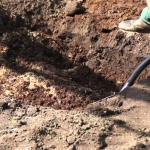
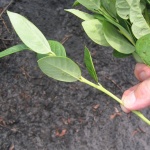
Review overview
Many people really like this variety: tall bushes give a lot of berries at once, and the harvest can be stored in the refrigerator for about 2 months. The plant tolerates winters well, does not freeze without shelter, only the roots mulch. Others believe that this blueberry is the most common, no worse or better than others.
